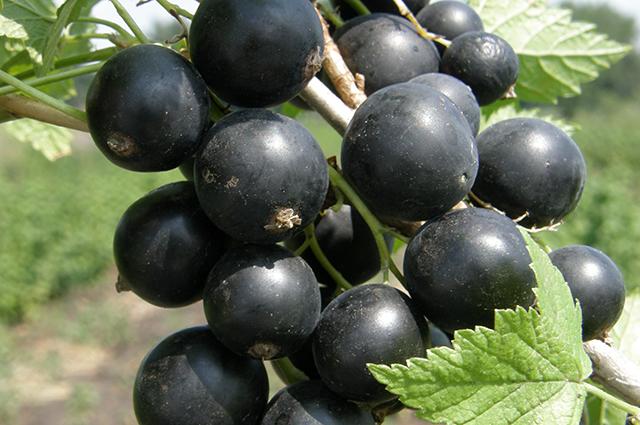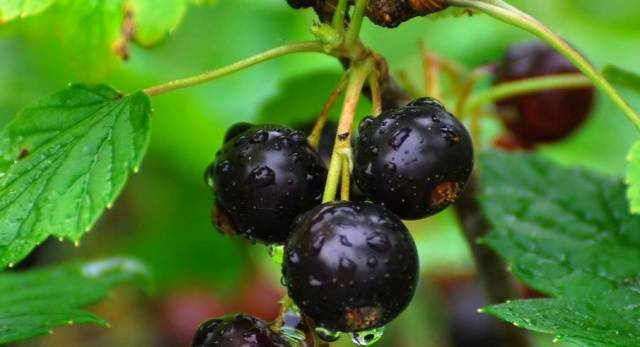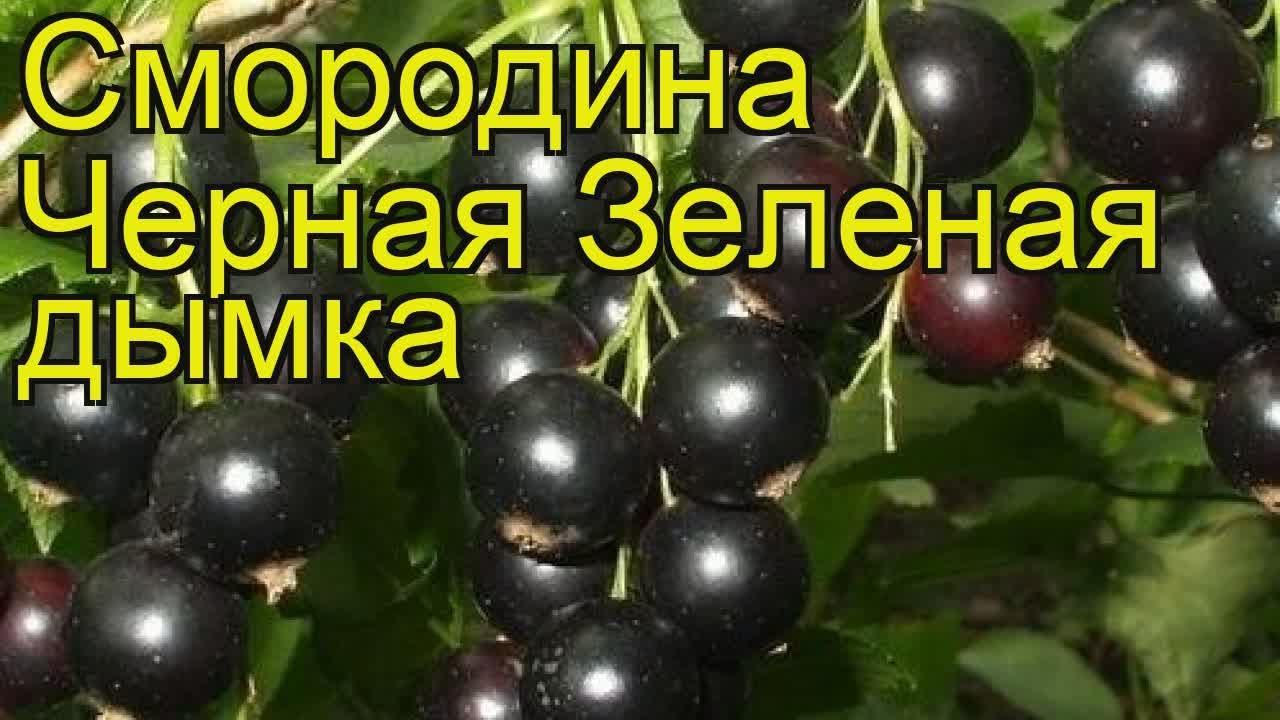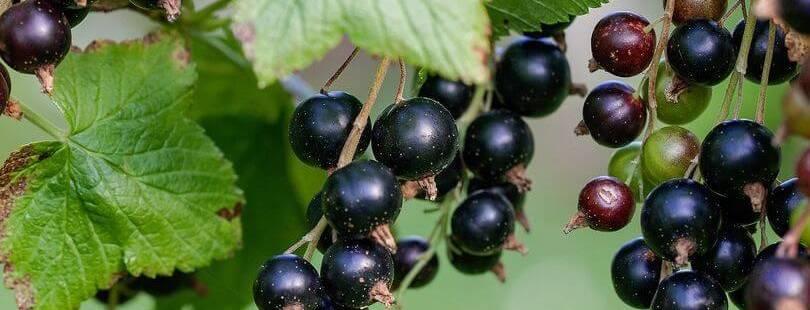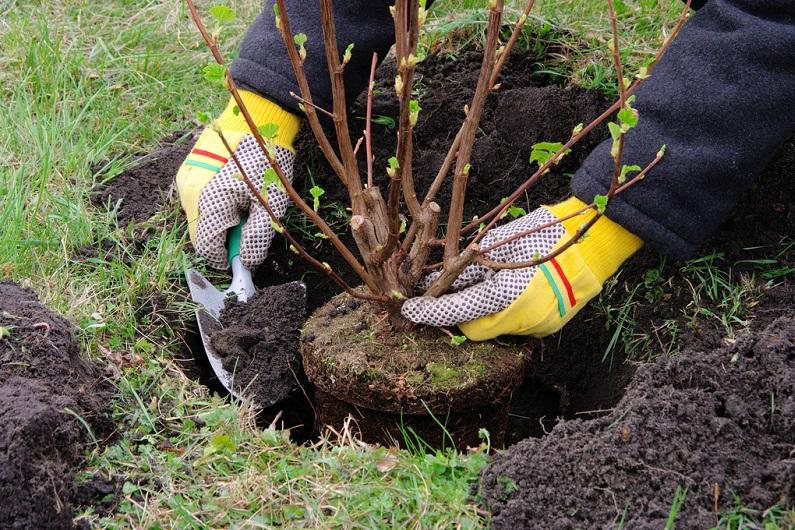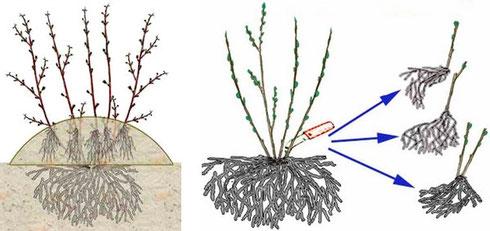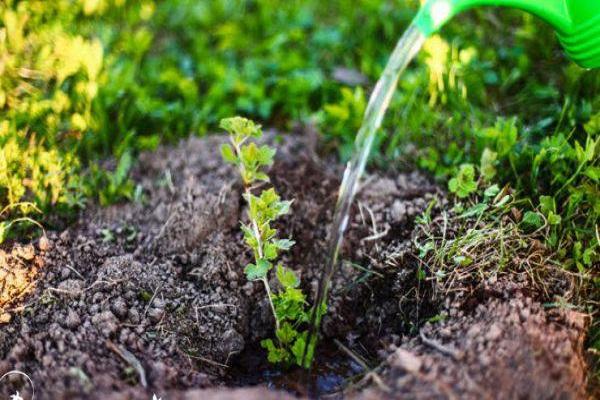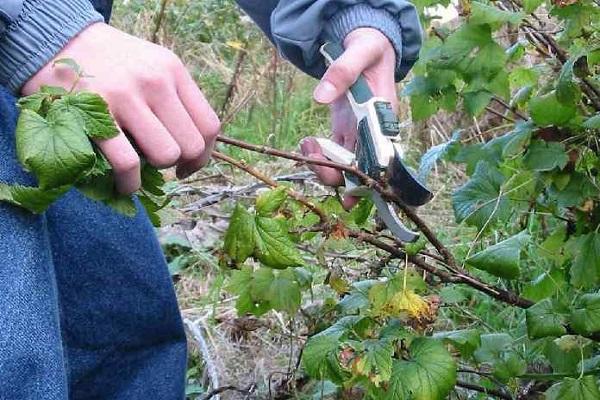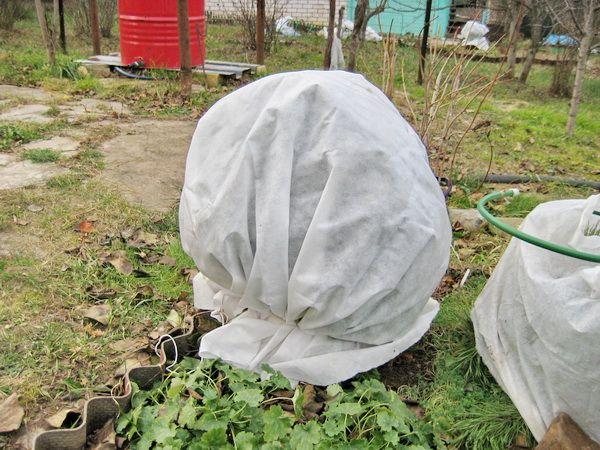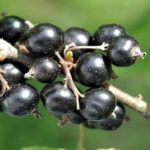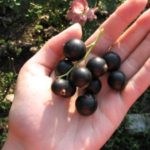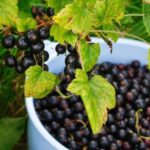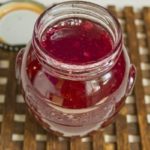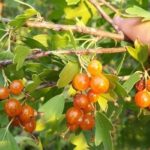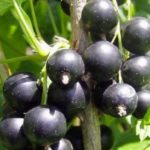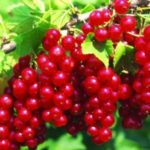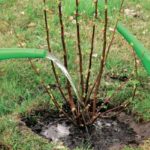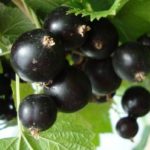Hybrid varieties with improved characteristics are increasingly being chosen for growing currants in home gardens or summer cottages. This type includes black currant of the Green Haze variety. It is popular because of its unpretentiousness and good yield indicators.
- History of currant breeding Green Haze
- Advantages and disadvantages of the variety
- External description of the hybrid
- Bushes
- Flowering and berries
- Characteristics of the variety
- All about productivity
- Frost and drought resistance
- Susceptibility to diseases and pests
- Features of planting currants
- Recommended disembarkation times
- Site selection and soil preparation
- Technological process of planting
- Proper care of bushes
- Irrigation and fertilizing
- Pruning and shaping bushes
- Preventive treatments against pests and diseases
- We protect the variety from frost
- Tips from experienced gardeners for growing Green Haze
History of currant breeding Green Haze
In the early 2000s, breeders from the Moscow Scientific Institute named after Michurin crossed the currant varieties Shmyrev and Karelskaya. The hybrid obtained as a result of crossing was named Green Haze. After a trial period, the variety was officially included in the state register and allowed for use by amateur gardeners. Since 2004, it has been successfully grown in the Urals, Siberia, and in the Central and Northwestern regions.
Advantages and disadvantages of the variety
Among the main advantages of the variety are:
- frost resistance;
- winter hardiness;
- drought resistance;
- immunity to infection;
- high yield rates;
- stability of fruiting.
The main disadvantage of the variety is its vulnerability to bud mite attacks. The parasite can destroy up to 75 percent of the crop.
External description of the hybrid
The variety is classified as mid-season. Young plants are bright green in color, becoming light yellow as they mature.
Bushes
The shrub grows up to 1 meter in height, the branches are spread out to the sides. The leaf blades are five-pointed, light green, with pronounced central veins.
Flowering and berries
The brushes reach 10 centimeters in length and have a conical shape. When blooming, the flowers resemble the shape of a glass. The fruits completely cover the clusters when ripe, leaving no gaps. The berries reach 1.6 grams in weight, black in color, with a glossy surface. The taste of currants is classic, sweet and sour.
Characteristics of the variety
Black currant variety Green Haze has been described in detail by breeders.Culture is characterized according to several criteria.
All about productivity
The first harvest is harvested the next year after the seedlings are planted. The variety has a high level of fruiting. An adult bush produces up to 4 kilograms of berries per season.
The fruits have good shelf life, which is especially appreciated during transportation and storage.
A feature of the variety is considered to be an increase in yield in the 7th year of existence. Stable fruiting, subject to maintenance conditions, is possible for 14 years.
Frost and drought resistance
The Green Haze hybrid was conceived as a variety that can withstand frost and drought. Breeders have achieved the following results:
- the shrub can withstand temperatures down to -20 degrees;
- under cover the bushes are stored at -45 degrees;
- With regular watering, a week-long lack of moisture will not harm the plant.
Susceptibility to diseases and pests
Currant variety Green Haze is resistant to diseases and pests. The bud mite poses a danger to the crop. This is a small worm that attacks plant buds. After flowering begins, the parasites leave the buds and spread throughout the entire bush. The mite leads to the loss of part of the crop.
Affected bushes are dug up and then destroyed. Chemicals are not able to stop the proliferation of the parasite, so treatment is not practiced. The main control measures are preventive actions before budding begins.
Features of planting currants
Agricultural technology for growing currants Green haze lies in the observance of several important conditions. When planning plantings, take into account:
- selection of a suitable location;
- control over soil condition;
- compliance with crop rotation;
- preparation and care of seedlings;
- bush inspection;
- removal of infected parts.
Recommended disembarkation times
Gardeners recommend planting the crop in the fall. To do this, select suitable weather conditions. For the northern regions, the period from late August to mid-September is suitable. For the southern regions, the time is chosen until the first half of October.
Seedlings must be able to adapt and take root before the first frost.
Site selection and soil preparation
To maintain crop rotation, experienced gardeners recommend avoiding places where related crops grew before currants: raspberries, gooseberries, as well as horseradish, fennel, and basil. Avoid proximity to sea buckthorn, as this can lead to crop competition.
The place should be well lit and protected from winds. Do not place currants in lowlands, on uneven areas, with differences in the levels of the upper layer.
Technological process of planting
Holes for seedlings are dug 1-2 weeks before the planned planting. This is necessary for the earth to settle and compact. Humus mixed with wood ash is poured into the pits.
Planting pattern:
- the distance between bushes is at least 60 centimeters;
- the gap between the rows of bushes is at least 2 meters.
The seedling is placed in the hole and the roots are carefully straightened. The root collar is buried 6 centimeters to form a spreading shrub. The hole is covered with earth, compacted, and the furrow created around the seedling is abundantly watered.
After planting, the bush is pruned. Count out 5 buds and trim above it with sharp garden shears. The method promotes the growth of the root system and the formation of new buds in the next season.
Proper care of bushes
Caring for bushes includes following the rules and regularly inspecting the bushes.
Irrigation and fertilizing
In spring, the shrub does not need watering in the presence of winter snowdrifts.During the period when the ovary is formed on the bush, it is watered with warm water once for 5-6 days. The volume of moisture for 1 bush is 2-3 buckets of water.
Information! Water the currants at the root, while making sure that water does not get on the leaf blades and fruits.
Currants are fertilized starting from the 3rd year of existence, according to a special scheme:
- in spring - nitrogen-containing complexes;
- in autumn - organic fertilizers;
- from June to July - foliar feeding with nutrient mixtures.
Pruning and shaping bushes
To form a compact shrub and provide all parts of the plant with sunlight, the branches are pruned twice:
- In autumn. Form a bush, remove damaged diseased branches and yellow leaves.
- In the spring. Correct the bush, remove branches that were damaged by frost.
Pruning is an important stage in caring for currant bushes. On black currants, anti-aging pruning is practiced, starting from the 5th year of existence. For red and white currants, these dates are shifted by 3 years. Pinching is carried out to stimulate the formation of new shoots and the appearance of strong branches.
Preventive treatments against pests and diseases
To prevent infections and the appearance of parasitic insects, currants are processed before the first buds appear. For this purpose, Bordeaux mixture and special chemicals are used.
We protect the variety from frost
The frost resistance of the variety is at a high level, which means that Green Haze currant bushes are able to tolerate low temperatures. In addition, the species has good winter hardiness. This means that currants of this type are able to adapt to sudden temperature changes.
Despite the good performance, experienced gardeners recommend covering the shrub in severe Siberian frosts. For this purpose, special industrial materials are used. Agrofibre is particularly successful.
Warning! Do not use plastic film to cover currants.
The branches of the bush are bent to the ground, dug in, covered with industrial material and a load is placed on the unoccupied ends (bricks and boards can be used). Currants covered in this way, taking into account the flow of air to the lower parts of the plant, can withstand frost down to -45 degrees.
Tips from experienced gardeners for growing Green Haze
Currants are grown throughout the country. Experienced gardeners advise using some “tricks” when caring.
- In the Urals and Siberia, the top layer around the trunk is insulated with peat or sawdust. The layer can be from 5 to 10 centimeters.
- In Siberia, autumn pruning is not carried out. It is transferred to the spring to leave the bushes with more branches that protect the main stem from the cold.
- In the northwest of the country, gardeners add additional organic fertilizers to improve soil composition.
- In areas where strong winds prevail, the soil is covered with non-woven material for the winter.
- In spring, the soil around the currants is mulched with straw, sawdust or humus. This will protect it from weeds and pests.
- Currant pruning is carried out annually. A poorly formed, overgrown shrub reduces productivity, the berries become smaller and lose their taste.
- If there is not enough space for bushes to grow, trellises are used.
- When planting several bushes, it is recommended to use different varieties so that mutual cross-pollination occurs. This contributes to the appearance of more tasty large fruits.
- It is recommended to deflower seedlings that bloom in the first year of planting. Currant fruiting is allowed in the second year of growth.
- Before planting, it is recommended to dip the roots of seedlings in a clay mash. This will help the root system adapt faster.
- In the spring, currants are planted using the “transshipment” method, that is, with a lump of earth remaining after being removed from the planting container.
With proper care, Green Haze currants will bear fruit consistently for more than 10 years.


